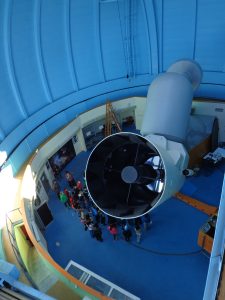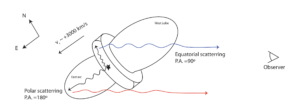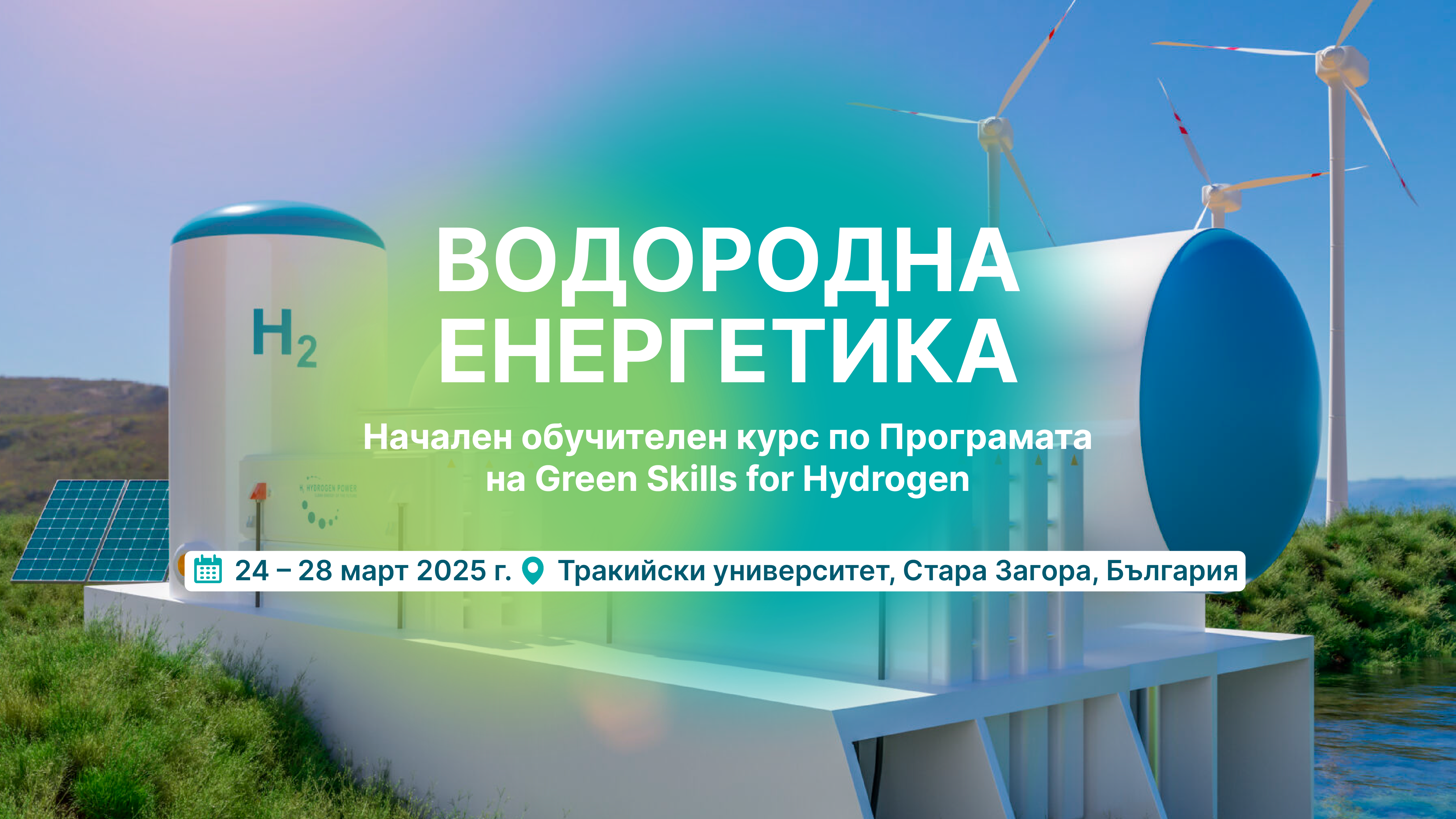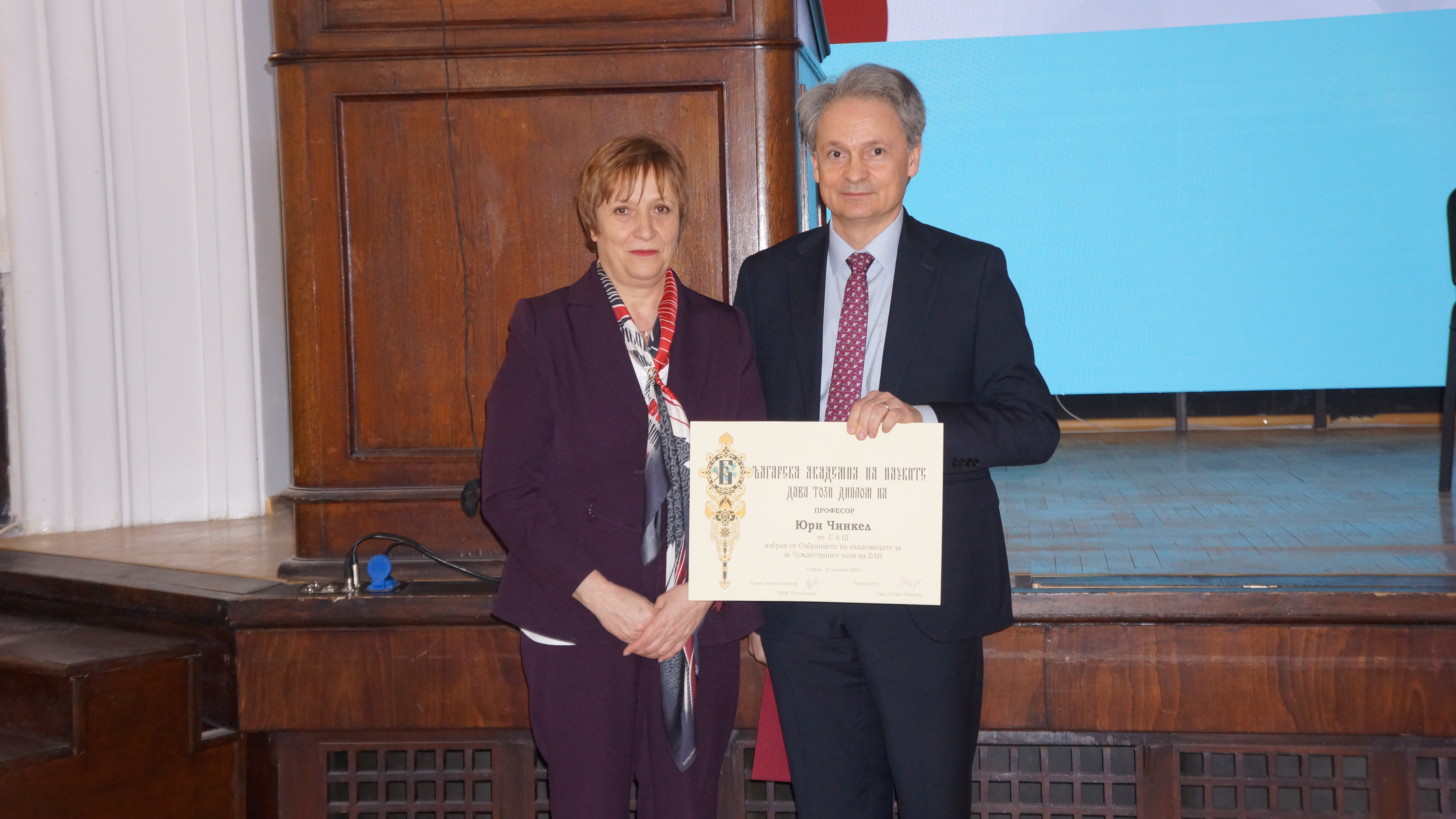The telescope with a 2-meter mirror in NAO Rozhen
The results of the study were published in “Astronomy & Astrophysics”
The Institute of Astronomy has named the study of a star that is part of a class of bursting stars – recurrent novae – as its most significant scientific achievement for 2023. The results obtained by the team led by Sen. Asst. Prof. Yanko Nikolov, PhD, are published in “Astronomy & Astrophysics” 679, A150 under the title “Transient and asymmetric dust structures in the TeV-bright nova RS Oph revealed by spectropolarimetry”.
Juan Luna, Kiril Stoyanov, Galin Borisov, Koji Mukai, Jennifer Sokoloski and Antoaneta Avramova-Boncheva also participated in the processing and publication of the data obtained with the 2-m telescope at NAO Rozhen.
The RS Oph binary system, in which a white dwarf accretes material from a red giant donor star, has been studied. Over a period of time, thermonuclear reactions start in the accumulated material on the surface of the white dwarf, leading to an explosive ejection of some of the material. RS Oph will explode as a supernova in the future. A long-standing question in the study of this class of (new) outbursts is how dust can form in these outbursts in a seemingly hostile environment. Theoretical studies suggest that the collision of the ejected high-velocity matter from the thermonuclear explosion with circumstellar material results in regions dense and cold enough to form dust hours or days after the outburst. The dust formed in the first days after the explosion is difficult to observe and is often reported later, mainly in the infrared region.
Scheme of scattering regions in RS Oph – equatorial and polar regions
The study by the team of scientists with the 2-m telescope at NAO Rozhen shows that within two days after the RS Oph eruption as a nova on August 8, 2021, dust is formed, and it is asymmetrically located – in the orbital plane and perpendicular to it. It persists for 9 days, during which time it is gradually eroded in the hostile environment that accompanies an outburst. The study is the earliest recorded development of asymmetry in this object to date as well as being among the first dust detections in a nova ever. The methodology used studies scattered (polarized) light.
For this star, the spectropolarimetric characteristics are similar to those observed for another type of object, active galactic nuclei (AGNs). The coincidence is not coincidental, and it has been suggested that such geometry gives rise to similar characteristics in different types of objects.







